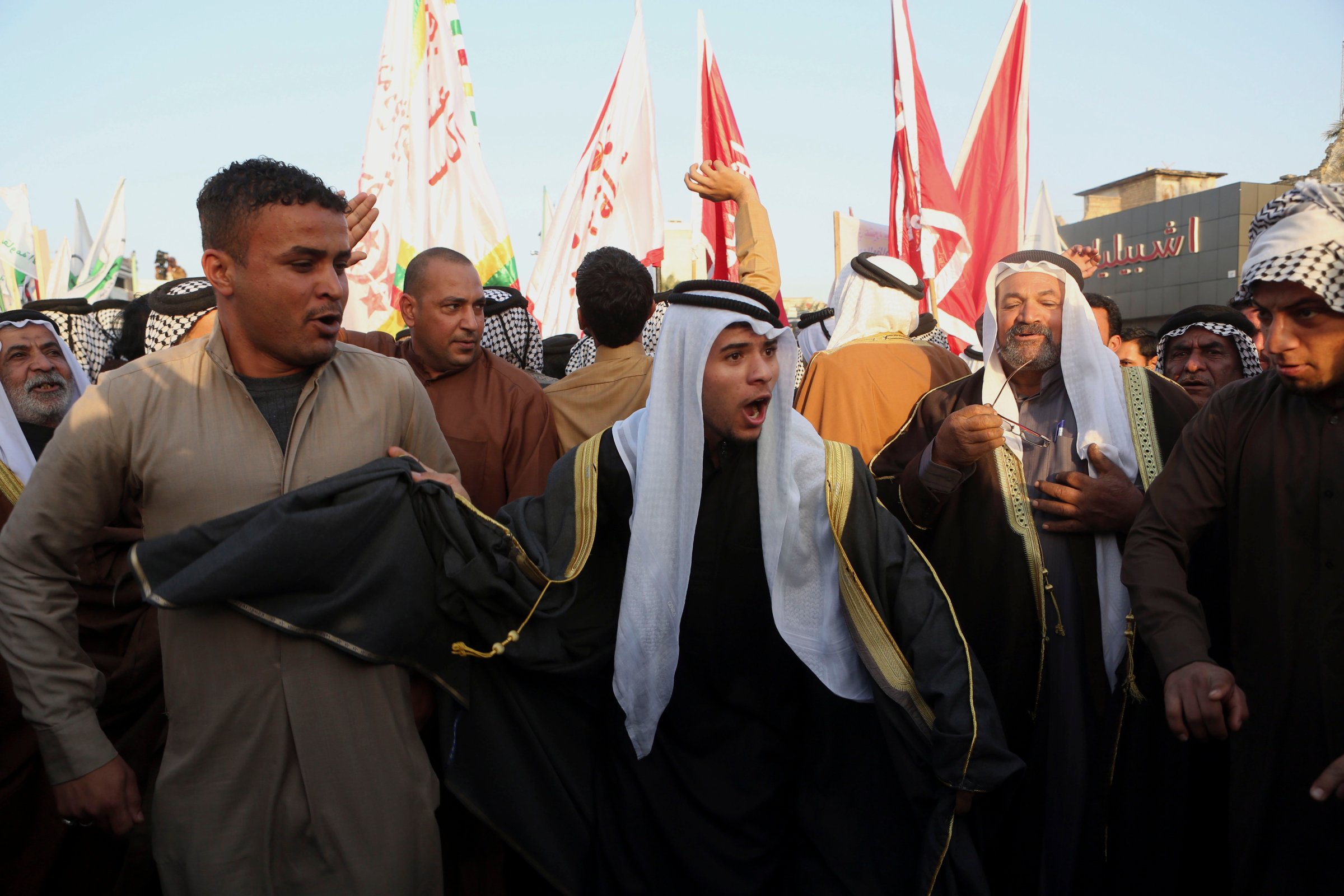
Saudi-Iran relations have spiraled downwards following Saudi Arabia’s execution of Nimr al-Nimr, a prominent Shia cleric and activist. Nimr was a Saudi citizen, but his execution by Sunni Riyadh outraged Shia Tehran. These five facts explain where this confrontation goes from here—and what it means for the Middle East and the rest of the world:
1. The Execution Heard Round the World
Tumbling oil prices and the Iran nuclear deal have left the Saudis feeling more isolated than ever, and the royal family is eager to show that it’s still strong and intends to lead in the Middle East. Having vowed to crack down on all forms of extremism, Riyadh executed 47 people with alleged ties to terrorism on Jan. 2, the largest mass execution in the country since 1980. Only four of those executed were Shia, but it’s the death of Nimr that has captured the world’s attention. The cleric was an outspoken champion of Saudi Arabia’s marginalized Shia community, and his killing was taken as a provocation by Iran. Not that it matters much to the Sunni majority in Saudi Arabia—in their eyes, Nimr was convicted of a serious crime and punished accordingly. His execution boosts the domestic credibility of Saudi leadership with its own people.
Read More: How Saudi Arabia’s Spat with Iran Affects the U.S.
2. Problems in the Kingdom
That matters because, for the first time in decades, the Saudi kingdom finds itself headed toward a potentially precarious financial future. In July 2014, the price of oil hovered around $115 a barrel; today it has fallen below $40. That’s a big deal for a country that depends on oil sales for 80 percent of its budget revenue and 45 percent of its GDP. On Dec. 28, Riyadh announced spending and subsidy cuts while still projecting an $87 billion dollar deficit for 2016. While not exactly “austerity” policies in the European sense of the term, it’s an alarming development for Saudi citizens, who depend heavily on government to make life affordable. And while the execution of Nimr probably wasn’t originally intended to stoke tensions with Iran, Saudi leadership has refused to back down in the aftermath, recognizing that a common foreign enemy might do wonders for Saudi social solidarity among the Sunni majority.
(The Telegraph, Forbes, Washington Post)
Read More: Former U.S. Ambassador: What the Saudi Arabia-Iran Conflict Means for Stability
3. Playing Hardball in Tehran
Within hours of Nimr’s execution, 1,000 Iranians stormed the Saudi embassy in Tehran. In all likelihood, Basij militia members were behind the attack, with the consent of Supreme Leader Ali Khamenei. For Iran’s hardliners, Nimr’s execution could not have come at a better time. Conservatives have been on edge since the nuclear deal was struck this summer, fearing the deal will infect the country with Western influence. With elections for Parliament and the Assembly of Experts looming in February—the first time in history they are being held simultaneously—hardliners are in a bind, unable to campaign against a deal that 75 percent of Iranians generally support and that will provide much-needed revenue, growth, and jobs. The flare up with Saudi Arabia gives them a solid issue on which to run.
(Stratfor, Wall Street Journal)
Read More: Why Saudi Arabia Is Heating Up Its Cold War With Iran
4. Iran Still Rising
But if the dustup with Saudi Arabia has been great for hardliners, it’s a headache for Iranian President Hassan Rouhani. Rouhani has tied his political legacy to the nuclear deal, and Iran is about a month away from seeing the first returns. If all goes well, Iran can unlock nearly $58 billion in frozen assets. It’s why Rouhani was quick to denounce the Saudi embassy attack and to arrest 40 Iranian rioters in the embassy mayhem.
Rouhani realizes that Iran—the Middle East’s second largest economy even under sanctions—is on the upswing. If sanctions are successfully lifted, Iran will bring an additional 1.5 million barrels of oil per day to markets by the end of 2016. At the moment, Iran has more to lose than Saudi Arabia if things spiral out of control. Only all-out war could prevent Iran’s sanctions from being lifted, and Iran will work hard to make sure that doesn’t happen.
(Wharton, New York Times, CNN)
5. Proxy Conflicts
Proxy wars are another matter. In Yemen, Houthi rebels, supported in part by Iran, continue their assault on the Saudi-supported government. Look for that to intensify as Iran tries to drain more Saudi resources—the war there costs Riyadh $200 million a day. In Syria, Iran will continue to prop up Assad (they’re already funneling $1 to $2 billion a month to the country) as Saudi Arabia continues to fund anti-Assad Sunni rebels, making the mess that much worse. Peace talks can go nowhere in this environment. Saudi and Iranian proxies in Lebanon will have even less incentive to strike the grand bargain on Lebanese political leadership that international observers had been hoping for. In Iraq, the real winners will be ISIS as the Shia-dominated government will continue to refuse to enlist Sunni Iraqis to tackle the terrorist group, and Iraq’s Sunnis will have little incentive to help roust ISIS fighters from their strongholds.
The bottom line? The Iranians and Saudis aren’t headed for direct conflict. Instead, as with the United States and Soviet Union, they’ll stage their fights inside other people’s borders. Yet more bad news for the Middle East.
More Must-Reads from TIME
- Inside Elon Musk’s War on Washington
- Meet the 2025 Women of the Year
- The Harsh Truth About Disability Inclusion
- Why Do More Young Adults Have Cancer?
- Colman Domingo Leads With Radical Love
- How to Get Better at Doing Things Alone
- Cecily Strong on Goober the Clown
- Column: The Rise of America’s Broligarchy
Contact us at letters@time.com